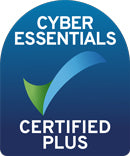Weight loss vs fat loss

If you’re on a weight loss journey, we all know that keeping track of your weight is one of the easiest ways to log your progress. But you might find that some weeks you’re not losing any weight, despite sticking to your programme. Why is this? Well, it might be that you initially lost some water weight, or that you’ve been building muscle.
In this article we’ll look, we’ll look at the difference between weight loss and fat loss, what water weight is and the ways to lose fat but still build muscle.
What is weight loss?
Put simply, weight loss is the process that happens when you become lighter. This might be on purpose (e.g., if you need to lose weight because you’re overweight), or it might be unintentional (e.g., you’ve been unwell).
What is fat loss?
Fat loss is what happens when you lose body fat. Body fat is the fat that’s stored around your body. Any fat, carbohydrates or proteins that aren’t used by your cells or turned into energy are turned to body fat. So, if you’re using less energy than you consume, you’ll likely have a surplus of calories. This can lead to you having more body fat and putting on weight.
If you start exercising more, and reducing your calorie intake, you’ll be in a calorie deficit. When your body is in calorie deficit over a period of time it will start to tap into its energy reserves in fat. Burning more calories and using these fat reserves might mean you start to lose weight.
What is the difference between fat loss and weight loss?
Weight loss is the catch all term for any weight you lose – whether that’s fat, muscle mass or even water weight. Fat loss is simply the fat you lose.
How to distinguish between fat loss and weight loss
If you’re on a weight loss programme, it can be quite hard to work out if the weight you’re losing is fat, or something else. Weight loss can be measured using regular bathroom scales. To measure fat loss, you’ll need to use a specialised set of ‘smart scales’, which sends out tiny electrical impulses through your body. The impulses travel quicker through parts of the body that are made up mainly of water, e.g., muscle and blood compared with bones at fat. The speed the impulse travels and comes back to the machine indicates the percentage of body fat, muscle etc. you have.
It's important to remember that losing weight and losing fat won’t always come hand-in-hand. Some weeks you might not lose any weight on the weighing scales, but you have lost fat. This would likely be because you’ve been exercising and building muscle and muscle tends to weigh more than fat. This is why we advise keeping track of your hip, waist and thigh measurements, as well as your weight, as you might see these changing as you become leaner.
What is water weight?
About 70% of the body is made up of water, that’s why it’s important to stay hydrated. Water weight is the total weight of all the water in your body.
Water weight or fat loss?
If you’re in the first few weeks of a weight loss programme, you might find you lose weight quite quickly. That’s because when you first reduce calories and increase exercise, the body gets the extra energy it needs from its glycogen stores. Glycogen is a form of glucose stored in the body for energy, it’s mainly found in the liver and muscles. Glycogen is made up, in part, of water. When it’s burned, it releases that water, resulting in a temporary type of weight loss that’s mainly water.
Should I focus on losing weight or just losing fat?
If you’re overweight and need to lose weight, it’s best to focus on losing weight as a whole, as it can be quite hard to work out if you’re losing fat if you don’t have the right equipment available. If you’re exercising more and reducing your calorie intake, you should be losing weight and also losing fat, and you might build some muscle.
How to lose fat and gain muscle
Losing weight if you’re overweight centres around reducing calories and reducing exercise. Generally speaking when you're not trying to lose weight:
- An active woman needs 2000kcal
- An inactive woman needs 1800kcal
- An active man needs 2500kcal
- An inactive man needs 2000kcal
So while you’re trying to lose weight, you need to burn around 500 calories more than you consume.
If you’re looking to build muscle, there’s a couple things you can do:
-
Strength exercises
Strengthening exercises like lifting weights, push-ups, sit-ups and squats helps burn calories but also builds muscles.
-
Eat more protein
Protein is a key building block for muscles, so if you want to build yours, you’ll need to think about how much protein you’re eating. Good sources of protein include things like chicken, fish, pulses, nut butters, high protein yoghurt, eggs, milk and cottage cheese.
You could also try whey protein shakes/powders, these are a good source of protein before or after a workout. But it’s worth checking the ingredients to make sure the shake or powder isn’t really high in sugars or calories.
Medicated weight loss with Online Doctor
If you need help on your weight loss journey, here at Online Doctor we have a library of information articles on healthy eating, losing weight and living healthier. We also have a range of weight loss treatments, suitable for people with high BMIs. You can find out more about Xenical.
References
https://www.hse.ie/eng/about/who/healthwellbeing/hse-education-programme/resources/healthy-food-for-life.pdfhttps://patient.info/news-and-features/what-causes-water-retention
https://www.mayoclinic.org/healthy-lifestyle/weight-loss/in-depth/weight-loss-plateau/art-20044615
https://www.mayoclinic.org/healthy-lifestyle/weight-loss/in-depth/calories/art-20048065



